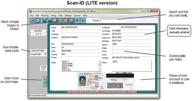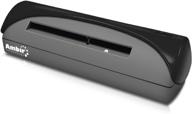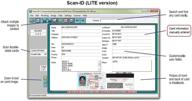
Review on Kodak P811BK Personal Negative Scanner by Aaron Urena

Meets all expectations, amazing
So I did a lot of research and finally bought this scanner because it takes 8x10 pictures. It was an excellent choice. It does what it says on the tin, but I haven't tried a battery-powered scan or a transparency/negative scan. So here is a quick overview of this scanner: - Capable of scanning images at 300 dpi or higher. 600dpi. When you turn it on, it defaults to 600 dpi. My photos average around 1MB in size, ranging in size from 700KB to 2.2MB. Basically, these are ordinary 4x6 images. for negatives and slides the scanner is programmed to 1200 dpi, which is probably good. I didn't scan the negatives or slides - Scanning while connected to a computer eliminates the need to insert a memory card into the scanner. Comes with a 4GB memory card which is nice to have. - Comes with two programs/installers: one is a driver program that allows you to scan to a folder on your computer. This program cannot do much more. The second program is Kodak's photo editing software, which I have neither tried nor installed. Once installed, the scanner "just works”. I have an IBM/PC computer. That's a great thing because it's usually what you need from your electronics. I've never had work absences. As long as the scanner is connected to your computer while scanning, you can instantly review your photos, which is invaluable. I wouldn't scan photos into a pass-through scanner without checking each photo. It's just physically impossible to get a perfect scan every time with this type of scanner. It will be crooked due to user error. For this reason I do without battery operation, I hope for a better mode. I check each image as I scan it to make sure the scan is acceptable. There have been some comments about the white lines in the images. I tested them too. I found that there are actually two issues that people confuse: There is a white line issue where the line is one pixel wide and the pixel is all white. This is corrected by recalibrating with the calibration card enabled and rescanning. It just happens every now and then, I wouldn't say it happens too often. The second issue I would address is a bug in the scanner's firmware. This is a line a few pixels wide that "eats" part of the photo. As a software engineer, I can say with confidence that this is a firmware bug. This is probably caused by a specific sequence of binary values in the digitized image. You don't need to recalibrate to get a good second scan. Just run the image again. I've never had it twice in the same picture. But regardless of the cause, these two conditions are very rare. I don't deduct any points for that, it's so rare. - A plastic envelope/holder for pictures is included with the scanner. Use it; even if your photos run through the scanner quite normally without an envelope. The envelope works wonders because the scanned images align on the first try. If you have images with dark edges (e.g. an image taken at night when one or more edges of the image are very dark), the scanner sometimes does not work. confused as to where the picture actually ends. For example, if you have a 4x6 image, the scanned image may look like 4x4. To solve this I stick something lighter behind the image at the dark border (sticky note has given me good results) and this causes the scanner to scan the whole image instead of blanking out the dark part of the image. The downside of this is that your image is now too big and you need to crop it with a graphic editor. To me, that's a lot better than having an image that's too small, but the decision is yours. The resolution is excellent here, as is the scan quality. I think the quality of (old?) prints becomes a problem much sooner than the quality of the scanner. The 600 dpi resolution is great for enlarging. Just don't expect these images to make a 2x3 foot poster. The real limitation will be the quality of the original images, which is much higher than the quality of the scan. This scanner is ideal as a document scanner. This takes 8.5 inch paper so you can scan legal or letter sized documents. It is very helpful to have good image editing software available for photo straightening, edge cropping and color correction (older images you can scan will have faded colors). , processing defects due to the development of the original image, etc.) Many images that after color and exposure correction looked much better than the original images. I used Adobe Photoshop to fix my images, I didn't install the software that came with the scanner so I can't comment on the software that came with it. The only thing I would like to point out is that the scanner comes with a calibration card (just pass it through the scanner to calibrate, it couldn't be easier) and a plastic photo sleeve. I don't know how to find replacements for any of these, so keep your calibration card clean. For this I put my map on Ziploc. It would be nice to be able to buy more of them. Accessories up again. All in all it was a great scanner to sit in front of your laptop and reminisce with your family about the old days of scanning and double checking your images. I've only sat there for a couple of evenings going through my large stack of photos and it's kind of sad that they're all finished. I need to visit my mother and do the same with her photo albums :-) I give this scanner the highest rating because there really is nothing to invalidate. It does what it says on the tin with the occasional hiccup. I wouldn't scan on battery power (btw the manual insists you use rechargeable batteries when running on battery power) without checking the images as you scan. It's just too much trust in the feed scanner. Too much can go wrong to just assume that all scans are perfect on the first try. Overall I am very happy with this purchase.
- Scans printed photos at high resolution of 600 dpi (selectable up to 300 dpi)
- Older model
New products
Comments (0)
Top products in 🔍 Slide & Negative Scanners

🔍 Enhanced Viewing Experience: Pana-Vue 2 Illuminated Slide Viewer with AA Batteries and Microfiber Cleaning Cloth

9 Review
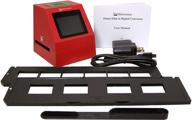
Wolverine F2D8 8 MP 35mm Slides/Negatives Scanner (Old Version): Preserve Your Memories with High-Quality Scans

12 Review

📷 Pandigital Photolink PANSCN05 One-Touch 4x6 Photo, Slide, and Negative Scanner (Discontinued)

10 Review
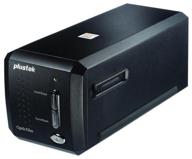
Plustek OpticFilm 8200i SE scanner black

16 Review


